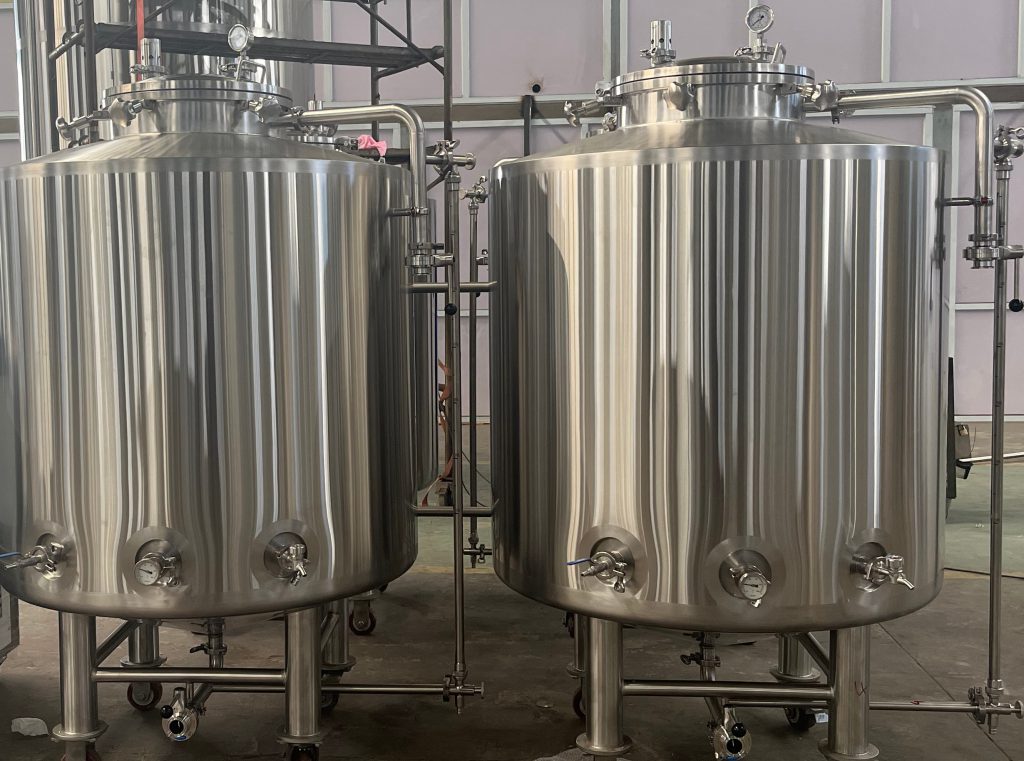Introduction

Kombucha, a tangy and effervescent fermented tea, has captured the hearts (and taste buds) of health-conscious individuals worldwide. Its unique flavor profile and purported health benefits have made it a popular beverage choice. But behind every delicious batch of kombucha lies a crucial element: the kombucha brewing container. This guide dives deep into the world of kombucha brewing containers, helping you choose the perfect vessel for your home brewing journey, ensuring your kombucha is not only delicious but also safe. Selecting the right kombucha brewing container is the first step towards a successful and enjoyable brewing experience.
Understanding the Importance of Kombucha Brewing Containers
Why Container Choice Matters
The kombucha brewing container you choose isn’t just a vessel; it’s a key factor in the fermentation process. The right kombucha brewing container ensures a healthy SCOBY (Symbiotic Culture of Bacteria and Yeast), proper airflow, and prevents unwanted flavors or contaminants from affecting your brew. A poor kombucha brewing container choice can lead to off-flavors, mold growth, or even a failed batch. Therefore, understanding the nuances of kombucha brewing container materials and design is essential for successful kombucha brewing.
Factors to Consider When Choosing Kombucha Brewing Containers
- Material: The kombucha brewing container’s material plays a significant role in the fermentation process and the overall taste of your kombucha. Certain materials can react with the acids in kombucha, impacting flavor and potentially leaching harmful substances.
- Size: The size of your kombucha brewing container depends on how much kombucha you plan to brew at a time. Consider your consumption habits and how frequently you want to brew to determine the appropriate size of your kombucha brewing container.
- Shape: The shape of the kombucha brewing container can affect the surface area for fermentation and the ease of cleaning. A wider mouth generally offers better access and airflow in your kombucha brewing container.
- Spigot: A spigot can make bottling your kombucha much easier. It allows for a cleaner, more controlled pour and minimizes the risk of contamination when using your kombucha brewing container.
- Aesthetics: Let’s face it, you’ll want a kombucha brewing container that looks good in your kitchen! The kombucha brewing container will likely be visible, so choosing one that complements your style can enhance your brewing experience.
Types of Kombucha Brewing Containers
Glass Kombucha Brewing Containers: The Classic Choice
Glass is a popular choice for kombucha brewing containers due to its non-reactive nature, allowing you to witness the fascinating fermentation process. It’s also readily available and relatively inexpensive, making glass kombucha brewing containers a common choice.
Pros of Glass Kombucha Brewing Containers
- Non-reactive: Won’t alter the taste of your kombucha. Glass kombucha brewing container are inert and don’t leach chemicals into your brew.
- Easy to clean and sanitize. Glass kombucha brewing container can withstand high temperatures and are easily scrubbed clean.
- Transparent: Allows you to monitor your brew’s progress. With glass kombucha brewing containers, you can observe the SCOBY’s growth and the kombucha’s clarity.
Cons of Glass Kombucha Brewing Containers
- Fragile: Glass kombucha brewing containers can break if not handled carefully. Be mindful of bumps and drops, especially with larger, heavier containers.
- Heavy: Especially larger sizes of glass kombucha brewing containers can be cumbersome. Consider the weight when moving a full container of kombucha.
Ceramic Kombucha Brewing Containers: A Stylish Option
Ceramic kombucha brewing container can add a touch of elegance to your brewing setup. They can also offer some insulation.
Pros of Ceramic Kombucha Brewing Containers
- Aesthetically pleasing. Ceramic kombucha brewing containers come in a variety of colors and designs, allowing you to choose one that fits your kitchen décor.
- Can help maintain a consistent temperature. Ceramic kombucha brewing containers can provide some insulation, helping to buffer temperature fluctuations.
Cons of Ceramic Kombucha Brewing Containers
- Can be more expensive than glass. Ceramic kombucha brewing containers often come with a higher price tag compared to glass options.
- May require special care to prevent cracking. Avoid sudden temperature changes and handle ceramic kombucha brewing containers with care.
Stainless Steel Kombucha Brewing Containers: Durable and Modern
Stainless steel is a robust and modern option for kombucha brewing containers. Its durability makes it a practical choice.
Pros of Stainless Steel Kombucha Brewing Containers
- Extremely durable and resistant to breakage. Stainless steel kombucha brewing containers can withstand rough handling and are unlikely to chip or crack.
- Easy to clean and sanitize. Stainless steel kombucha brewing containers are non-porous and easy to scrub clean.
Cons of Stainless Steel Kombucha Brewing Containers
- Opaque: You can’t see the fermentation process in stainless steel kombucha brewing containers. You’ll have to rely on other indicators to check on your brew’s progress.
- May impart a metallic taste if not properly seasoned. Some stainless steel kombucha brewing containers may require a “seasoning” process to remove any metallic taste.
Choosing the Right Size Kombucha Brewing Container
Small Batch Brewing (1-2 Gallons)
Perfect for individuals or small households, these kombucha brewing containers are easy to manage and clean. They are also a good option for those new to kombucha brewing.
Medium Batch Brewing (2-5 Gallons)
Ideal for regular kombucha drinkers or those who like to experiment with flavors. This size kombucha brewing container provides a good balance between volume and manageability.
Large Batch Brewing (5+ Gallons)
Suitable for large families or kombucha enthusiasts who want a continuous supply. Large batch kombucha brewing containers require more space and can be more challenging to manage.
Must-Have Features in Kombucha Brewing Containers
Wide Mouth for Easy Access
A wide mouth kombucha brewing container makes it easier to add ingredients, clean the container, and remove the SCOBY. This is a crucial feature for simplifying the brewing process.
Spigot for Hassle-Free Bottling
A spigot simplifies the bottling process and reduces the risk of contamination when using your kombucha brewing container. It allows for a controlled pour and minimizes spills.
Secure Lid or Cloth Cover
A secure lid or cloth cover with a rubber band ensures proper airflow while keeping fruit flies and other pests out of your kombucha brewing container. This is essential for maintaining a healthy brew and preventing unwanted guests.
Setting Up Your Kombucha Brewing Container
Cleaning and Sanitizing Your Kombucha Brewing Container
Thoroughly clean and sanitize your kombucha brewing container before each batch to prevent unwanted bacteria growth. Use hot, soapy water and rinse thoroughly.
Adding Your Starter Tea and SCOBY to Your Kombucha Brewing Container
Carefully place your starter tea and SCOBY into the kombucha brewing container. Ensure your starter tea is strong and your SCOBY is healthy.
Monitoring and Maintaining Your Brew in Your Kombucha Brewing Container
Regularly check your brew in your kombucha brewing container for mold or other signs of spoilage. Look for any unusual smells or visual changes.
Kombucha Brewing Container Comparison Chart

| Feature | Glass Kombucha Brewing Container | Ceramic Kombucha Brewing Container | Stainless Steel Kombucha Brewing Container |
|---|---|---|---|
| Durability | Moderate | Moderate | High |
| Transparency | High | Low | Low |
| Cleaning Ease | High | Moderate | High |
| Cost | Moderate | High | Moderate |
| Aesthetics | Moderate | High | Moderate |
| Reaction with Tea | None | None | None |
Conclusion
Choosing the right kombucha brewing container is a crucial step in your home brewing journey. It directly impacts the quality and safety of your kombucha. Consider your needs, preferences, and budget when selecting a kombucha brewing container. With the right vessel, you’ll be well on your way to brewing delicious and healthy kombucha at home, enjoying the fruits (or rather, the fermented tea) of your labor.
FAQ
Can I use any glass jar for kombucha brewing?
Yes, as long as it’s clean, food-grade glass. Avoid using leaded crystal or jars that have previously contained chemicals.
How often should I clean my kombucha brewing container?
Clean your container thoroughly before each new batch. This helps prevent the growth of unwanted bacteria or mold.
Can I use a metal spigot on my kombucha brewing container?
Yes, as long as it’s stainless steel. Avoid other metals that may react with the kombucha, potentially affecting its flavor and safety.

